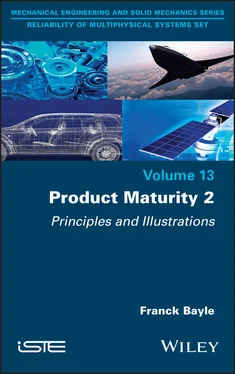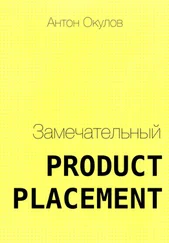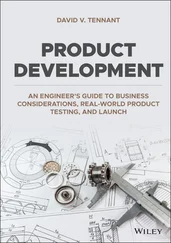Many companies still see the reliability study of a system before it becomes operational as a mandatory step to be overcome, bypassing or minimizing it as soon as possible. In the design phase, a signed product FMECA will end up in a folder, its purpose merely to certify that the rules have been followed correctly. The objective of the test phase is to confirm that the device being tested meets the requirements of a standard, without taking the opportunity to validate that the mission profiles on the ground will not unpredictably damage the product. During production, process control cards are used to verify that tolerance limits are not exceeded, without establishing forecasting instances that could lead to accidental stops. Hence, only data in the form of returned products, found to be defective by the end user, are subjected to a posteriori analyses by customer support. This can incur various costs and may lead to product recall if a serious defect is found.
Fortunately, however, the reality tends to be a little less bleak than the situation described above, with the emergence and dissemination of best practices that are based on theories validated by various industry sectors. These are now adapting to the challenges that companies face: making increasingly complex products that are more adaptable and ever-faster, while maintaining quality standards and reducing costs. This no longer involves applying deterministic models in which a single value is assigned to an objective to be reached. Instead, it is about drawing up a range of possible solutions that allow the supplier or integrator to make sure that the worst case a product might be subjected to on the ground can still be controlled by statistical modeling. The best way to achieve this is through the combined use of theoretical and technical resources: an in-depth understanding of the possible technological problems and solutions given by the manufacturer allows the qualified reliability engineer to build the most suitable predictive models. Ideally, a single person would have these two complementary sets of skills.
Franck Bayle is a perfect example of this. Throughout the second part of his career as an electronics engineer, he relentlessly addressed challenges that no one had previously openly solved, and he developed algorithmic solutions based on cutting edge theories. He was nevertheless confronted with the ills that plague most large groups: habit and fear of change. When he proposed significant advances across the whole company, only his more informed colleagues considered these to be opportunities for improvement. Sometimes his work was considered useless by those whose feeling was: “Why consider risks when there are no problems on the ground?”. This is reminiscent of: “Why would I get sick when I am fit and healthy?”. We have to be forward thinkers to be able to act before any problem arises, and Franck Bayle is such a person. His book presents all the best practices he has managed to implement within his department, as well as all the advances that I have had the chance to see implemented, which he continues to improve.
This book is essential reading for any passionate reliability engineer, and it is a real pleasure and an honor to write this foreword to accompany it.
Laurent DENIS
STATXPERT
November 2021
Foreword by Serge Zaninotti
When Franck invited me to work with him on his second book on system maturity, I immediately accepted. My interest in the subject has grown largely as a result of the rich technical exchanges we have had over the last 15 years, and strengthened after reading his first book, published in 2019, on the reliability of maintained systems under aging mechanisms.
Franck would tell me of his progress in the field of reliability, his field of expertise, and I – having always wanted to maintain the link between quality and reliability – would try to establish a connection with the standards.
Indeed, thanks to those who trained me as a quality engineer, I have always known that quality assurance should never be dissociated from dependability. I therefore felt instantly motivated by the opportunity to contribute to disseminating the acquired knowledge by means of a book. The subject system maturity can be mastered both through experience and through training.
It is often the failures or non-quality observed during the development or operation of a system that indicate to us that our patterns of thinking lack dimension.
However, in order to find an appropriate response to prevent these unexpected and feared events, and to be able to control them in the best way possible when they do occur, it is important to master quality risk management techniques. Risk management begins with risk prevention, the focus of this book.
In order to understand the problem of system maturity as a whole, before addressing the actual techniques used, it is necessary to put it in context. This context is provided by the quality standards for the systems.
Having trained as a general engineer within the Department of Energy and Environmental Engineering (GEn) at INSA Lyon, I then gained experience as a quality specialist, and have been a dependability supervisor since 1989. Franck therefore asked me to present the standards environment and the links that tie it to maturity, which the reader will find in Chapter 2of his previous book, Product Maturity 1 .
Serge ZANINOTTI
Thales
Quality Expert
November 2021
This book would certainly not have been possible without the contribution of certain persons. I therefore want to thank, first, my main supervisors throughout my career with Thales: Jean Riaillon, Laurent Portrait and Claude Sarno, who gave me the means to gain this experience.
For everything related to maturity, a special thank you goes to Serge Zaninotti, quality expert with Thales, and also the author of Chapter 2of my previous book, Product Maturity 1 , on the notion of maturity and the “quality” aspects, and to Serge Parbaud of Thales for his advice and always appropriate corrections. I would also want to extend my warmest thanks to Patrick Carton from Thales Global Service for the passionate technical exchanges we have had in recent years, his always apt remarks, his support and his listening.
Furthermore, I wish to thank Franck Davenel from DGA for our exchanges during PISTIS upstream study related to accelerated tests and burn-in, and to give my warmest thanks to Léo Gerville Réache for his valuable help.
Finally, I wish to thank my entire family, and particularly my wife, not only for bearing with me, but also for encouraging me while writing this book.
Reliability, availability, safety and so on are now major qualities that a product must have, irrespective of the industrial application field (automobile, avionics, rail, etc.) of its use. A significant literature related to these fields can be readily accessed, and is generally grouped under the umbrella concept of “dependability”.
During the whole lifecycle of a product, from specification to operation by the end user, a large number of actions are implemented in order for it to meet the specified requirements. Reliability is the quantitative basis for dependability activities, as poor reliability can lead to insufficient availability, for example, although it should be reached as soon as the products are in service.
The maturity of a product is therefore its capacity to reach the desired reliability level, from its launch into service until the end of its operation. Due to technical and economic challenges, it is very difficult to reach product maturity. Indeed, defects are very often generated during various phases of the lifecycle, reflected by failures that occur very early on in product operation (a manufacturing defect, for example), or during its operation (design flaw, integration flaw, etc.). This is particularly true for products whose service life is becoming longer (e.g. 30 years for components in the rail industry). It is important to note that this activity makes sense for maintained products, which are predominantly in industrial applications.
Читать дальше












